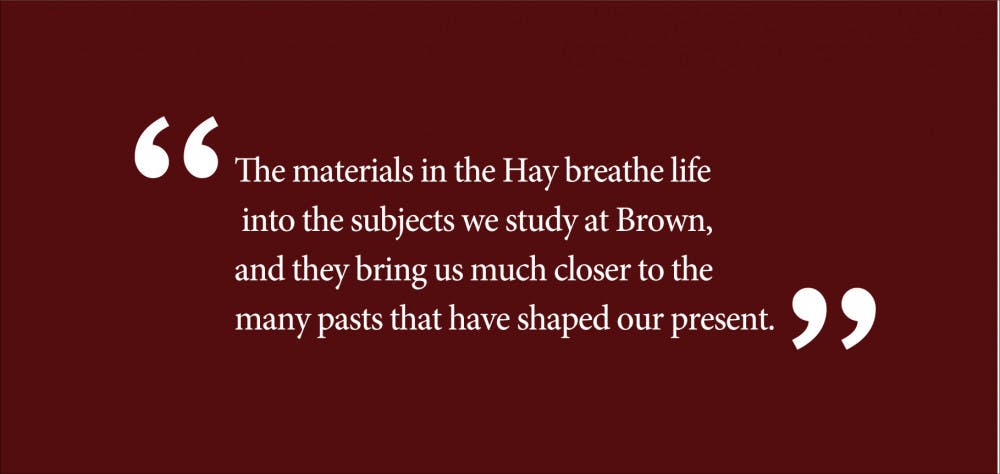To the Editor:
The concluding paragraph of Thursday’s article “,” noted “,” the recently-launched undergraduate guide to the John Hay Library. As a Special Collections Assistant at the Hay, I created the guide to offer students entry points to the perhaps daunting building (the marble busts of dead guys in the Willis Reading Room are not the friendliest, I admit) and its seemingly overwhelming mass of materials. I invite students to visit the website to learn about the Hay’s standing collections, find materials pertinent to their studies and interests, request materials, read about their peers’ work and connect with other special collections on Brown’s campus.
I emphasize that the Hay is home to teaching collections: The materials here are meant to be used and enjoyed by students, faculty members and community members alike. We invite anyone — including those without ties to Brown — to register online and request materials that they find enriching. The Hay’s collections, though often derived from private collectors and gifts, transform from things coveted for prestige or self-interest upon entering the library. In how these materials are used (in classes, for personal research, on display) and in what they contain (marginalia, inscriptions, correspondence), they foster connection, collaboration and community.
The Hay has something for everyone: papyrus scraps from the Book of the Dead; early editions of Galileo’s “Starry Messenger” signed by his assistant Vicenzo Viviani; George Orwell’s original manuscript of 1984; “Color Standards and Color nomenclature,” an early 20th-century, handmade book of pantone color blocks. In the stacks sit Damon’s Collection of Occult and the Smith Collection of Conjuring and Magicana, two masses of mystical and magical literature; the Pingree Collection of Indic scientific texts and Sanskrit texts on astronomy, math and medicine; the Alcohol and Addiction Studies Collections, which feature archival material from early temperance movements to the beginnings of Alcoholics Anonymous, research on addiction treatment and material from anti-drug campaigns; and, of course, the University Archives, which document the ins and outs of Brown’s history, including information on the tunnels and the Cold War bunker on Brown’s campus. (It’s underneath Wriston. No, I have not been granted access. Yes, I have asked.)
The materials in the Hay breathe life into the subjects we study at Brown, and they bring us much closer to the many pasts that have shaped our present. Whether in their first or last semester on campus, I encourage students to seek out and connect with these pasts, and I wholeheartedly, though biasedly, recommend Fields of Hay as a launching point for that inquiry.
Shira Buchsbaum ’19




